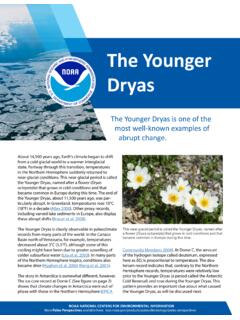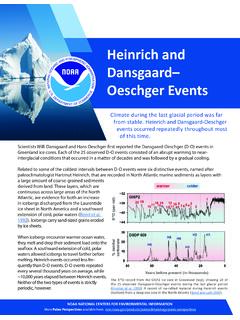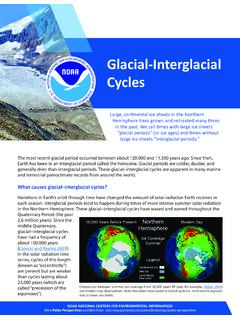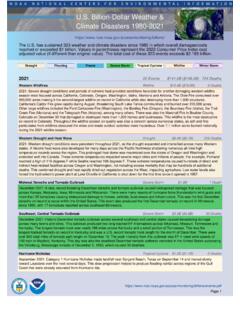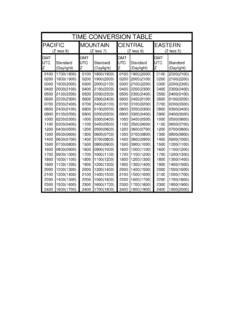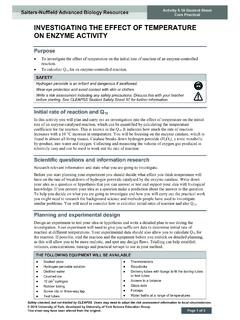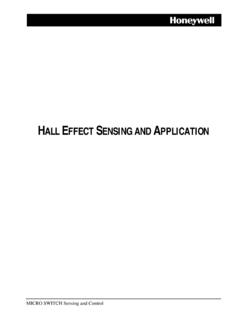Transcription of Temperature Change and Carbon Dioxide Change
1 NOAA NATIONAL CENTERS FOR ENVIRONMENTAL INFORMATIONT emperature Change and Carbon Dioxide ChangeWhen the Carbon Dioxide concentration goes up, Temperature goes up. When the Carbon Dioxide concentration goes down, Temperature goes down. One of the most remarkable aspects of the paleoclimate record is the strong correspondence between Temperature and the concentration of Carbon Dioxide in the atmosphere observed during the glacial cycles of the past several hundred thousand years. When the Carbon Dioxide concentration goes up, Temperature goes up. When the Carbon Dioxide concentration goes down, Temperature goes down. A small part of the correspondence is due to the relationship between Temperature and the solubility of Carbon Dioxide in the surface ocean, but the majority of the correspondence is consistent with a feedback between Carbon Dioxide and climate. These changes are expected if Earth is in radiative balance, and they are consistent with the role of greenhouse gases in climate Change .
2 While it might seem simple to deter-mine cause and effect between Carbon Dioxide and climate from which Change occurs first, or from some other means, the determination of cause and effect remains exceedingly difficult. Furthermore, other changes are involved in the glacial climate, including altered vegetation, land surface characteristics, and ice sheet Change (light blue) and Carbon Dioxide Change (dark blue) measured from the EPICA Dome C ice core in Antarctica (Jouzel et al. 2007; L thi et al. 2008).More Paleo Perspectives available here: paleoclimate proxies help us understand the role of the oceans in past and future climate Change . The ocean contains 60 times more Carbon than the atmosphere, and as expected, the changes in Carbon Dioxide in the atmosphere were paralleled by changes in Carbon in the ocean over the past several hundred thousand years. While the ocean changes much more slowly than the atmosphere, the ocean played an essential role in past variations in Carbon Dioxide , and it will play a role in the future over thousands of , paleoclimate data reveal that climate Change is not just about Temperature .
3 As Carbon Dioxide has changed in the past, many other aspects of climate changed too. During glacial times, snow lines were lower, continents were drier, and the tropical monsoons were weaker. Some of these changes may be independent; others tightly coupled to the changing level of Carbon Dioxide . Understanding which of these changes might occur in the future, and how large those changes might be, remains a topic of vigorous research. NOAA's Paleoclimatology Program helps scientists document the changes that have occurred in the past as one approach to understanding future climate which of these changes might occur in the future, and how large those changes might be, remains a topic of vigorous 2019 photo provided by NOAA shows the Mauna Loa Atmospheric Baseline Observatory in Hawaii. Measurements taken at the station in May 2021 revealed the highest monthly average of atmospheric Carbon Dioxide in human history.@NOAANCEI@NOAANCEI and @NOAAS atellites@NOAAData and @NOAAS atellitesOctober 2021
